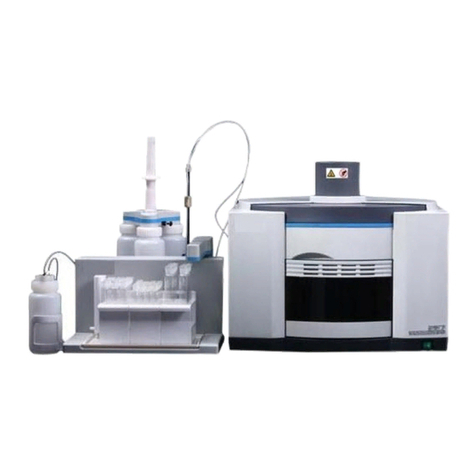
Contents
Contents ........................................................................................................................................ I
Chapter 1 Instrument Introduction............................................................................................. 1
1.1 Components inspection ................................................................................................... 1
1.2 UV/Vis spectrophotometer and method........................................................................... 1
1.2.1 UV/Vis spectrophotometer method......................................................................... 1
1.2.2 UV/Vis spectrophotometer...................................................................................... 1
1.2.3 Condition of measure method ................................................................................ 2
1.3 Components description.................................................................................................. 3
1.3.1 Front view............................................................................................................... 3
1.3.2 Rear view ............................................................................................................... 4
1.3.3 Side view ................................................................................................................ 5
1.3.4 Sample cell holder .................................................................................................. 5
1.4 Specifications .................................................................................................................. 6
Chapter 2 Installation .................................................................................................................. 7
2.1 Installation location ........................................................................................................ 7
2.2 Installation ..................................................................................................................... 7
2.3 Start ............................................................................................................................... 9
2.4 Installation performance .............................................................................................. 10
2.4.1 The accuracy and reproducibility of wavelength................................................... 10
2.4.2 Flatness of the baseline........................................................................................ 12
Chapter 3 Instrument operation ............................................................................................... 13
3.1 About double beam measurement............................................................................... 13
3.1.1 What is double beam............................................................................................ 13
3.1.2 How to use a double beam instrument ................................................................. 14
3.2 Application examples................................................................................................... 15
3.2.1 Photometric measurement example ..................................................................... 15
3.2.2 Spectrum measurement example......................................................................... 16
3.2.3 Quantitative measurement example ..................................................................... 18
Chapter 4 Optional accessories ............................................................................................... 22
4.1 CH19-1 Thermostatic cell holder ................................................................................... 22
4.2 DS19-1 Angle-changeable solid sample holder............................................................. 23
4.3 IS19-1 Integrating sphere .............................................................................................. 24
4.4 LS19-1 Long pathlength cell holder............................................................................... 25
4.5 MH19-1 Micro cell holder............................................................................................... 26
4.6 MH19-2 Ultra-micro cell holder...................................................................................... 27
4.7 MR19ˉ1 Specular reflection accessory........................................................................ 28
4.8 MS19-1 Manual 8-cell holder......................................................................................... 29
4.9 PS19-2 Sipper pump ..................................................................................................... 30
4.10S19-1 Solid sample holder ............................................................................................ 32
4.11SS19-1 Short pathlength cell holder .............................................................................. 33






























